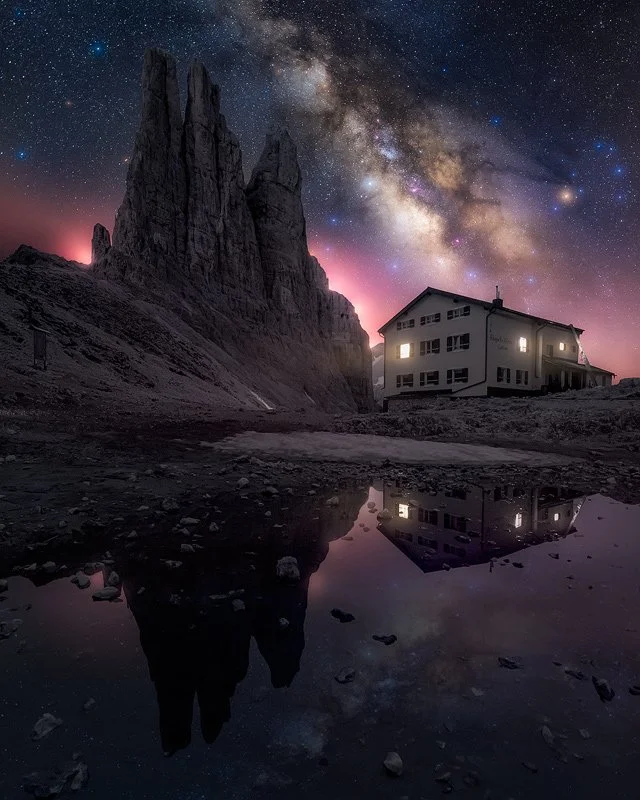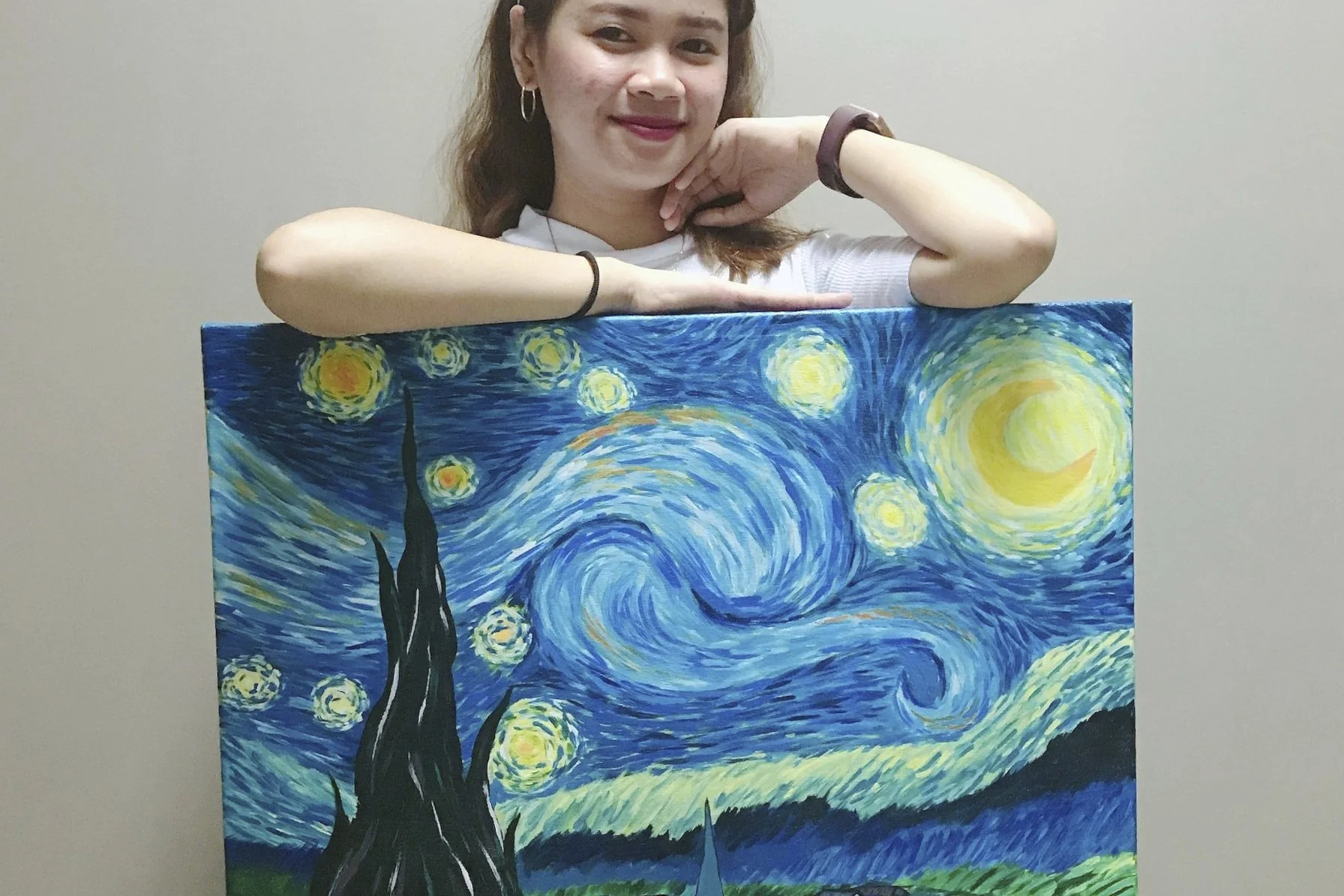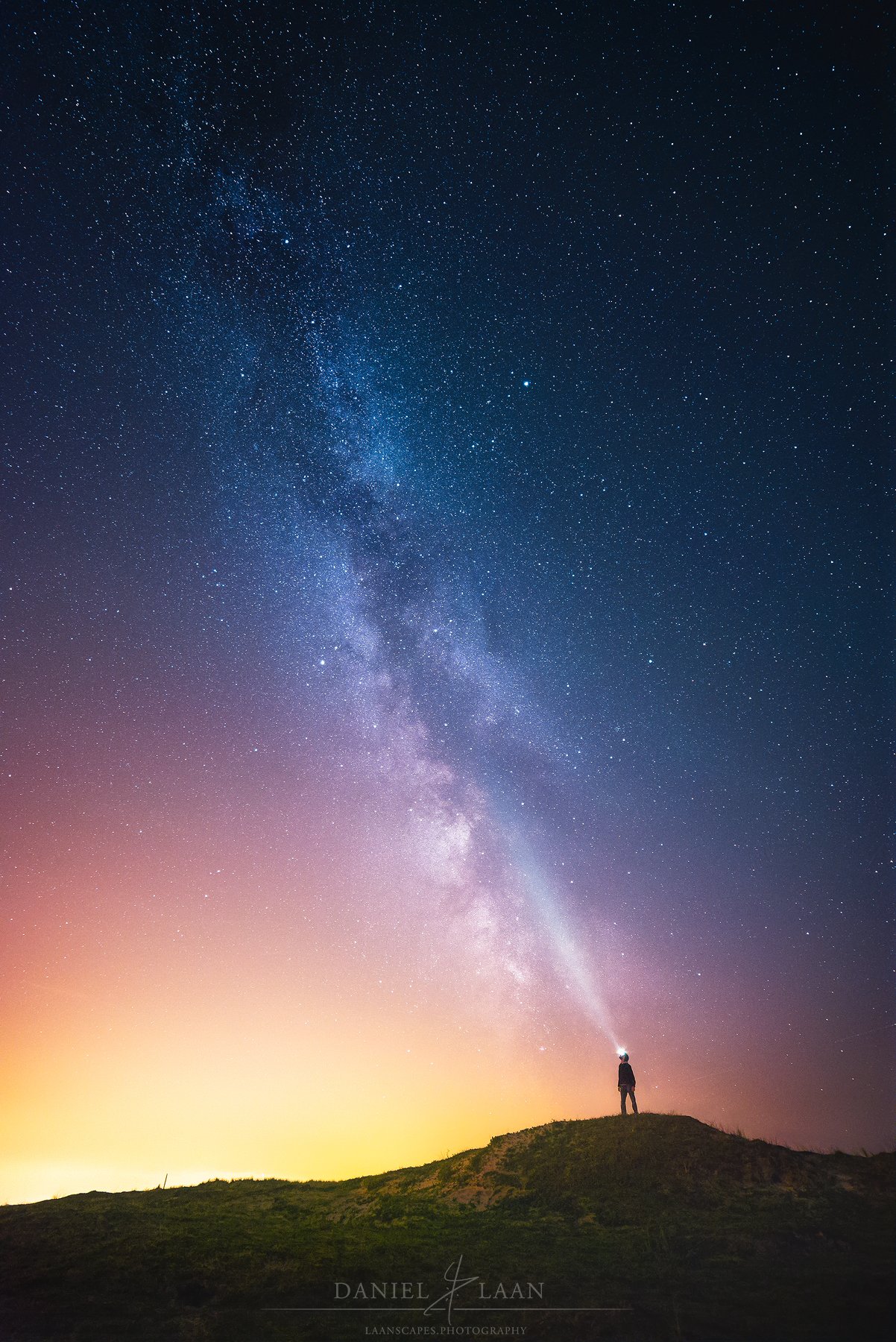A Case for Nightscapes
Introduction
Landscape astrophotography is a niche of outdoor photography in which the primary subject is the night sky. Often the Milky Way dominates the sky over a landscape, because this band of dust, gas and stars is both pleasing and awe-inspiring to look at. The Milky Way is part of our place in the cosmos and the largest structure to call home that we can see with the naked eye. But it is also fading. Before long, it will not be visible at all, should we continue the pace and current approach to modernization. In this article, my goal is to convince you of the brilliance, excitement and importance of nightscape photography.
The advance of art and technology
As humans we have always been fascinated by the night sky. For as long as we can call our species human and maybe even before that, evidence has been found that we look to the stars for answers to life’s biggest questions. Where do we come from? Where will we go when we die? And what is our place among all those sparkly lights in the night sky?
Sofia Khlebnikov via Unsplash
Prehistoric art, buildings and even entire cities were inspired by and aligned to the stars. When paintings from classical times featured stars, we showed a connection between man and firmament in more detail than ever before, but art has also incorporated the interpretation of the artist since the dawn of man. Exaggerated streaks, larger stars and the well-known suggestive lines between stars to form imaginary constellations are testament to the fact that our interest in the stars goes way past physical boundaries.
Scientists have imaged the night far longer than we have as photographers. What began with drawings, later evolved to advancements in photography and spectroscopy in order to record relative positions in space, measure what stars are made of and indeed the size of the observable universe itself. But to an astrophysicist, the landscape in under the stars isn’t that interesting, even when the night sky should account for most of the photograph. But to the general public, it is very much part of the story. A landscape under the night sky shows an earthly connection between our roots and probably our eventual destination.
Vedrana Filipović via Unsplash
As photography evolved in the late 19th century, photographers could have only dreamed of what we would eventually be able to do a hundred years later with the advent of digital photography. At first, digital cameras had bit of catching up to do while certain modern types of film are sensitive enough to image the stars. The true splendor of the night eluded artistic photographers until more sensitive and affordable digital cameras came about. But as cameras became more well adapted to suit the needs of the digital photographer, so did the night become ever harder to photograph for another reason.
Light pollution
When you look at an image taken from space that looks back at the marvelous planet that we all inhabit, you will probably notice that the night side of Earth is well illuminated in most parts of the world. Light pollution is not only a nuisance to us nightscape photographers; it is detrimental to human, animal and even plant welfare. We have trouble sleeping and insects, turtles, birds, bats and even marine wildlife all interpret that fake light as being the sun, moon or Milky Way. That causes them to divert from their evolutionary behavior and migrate to the cities where they end up confused, unhealthy and dead. It is a worldwide problem that non-profit organizations such as the International Dark Sky Association are fighting to address.
Jan Huber via Unsplash
Light pollution appears as this glow on the horizon when stray artificial light emanates from cities, roads and buildings. It is often yellow or orange in color, because the lamps that produce it are still to this day utilizing high pressure sodium bulbs. When sodium is heated, it releases a very particular orange color. That is why the artificially illuminated night side of Earth looks mostly orange. There are of course other ways to illuminate night on Earth. In Japan, the most common street lighting was based on mercury, which emits a ghostly greenish hue.
Alex Knight via Unsplash.
But as we become increasingly aware of the energy waste both of these lamps produce in the form of heat, other technologies such as multicolored LEDs and OLEDs slowly but surely replace the old orange and green glows.
Kilian Seiler via Unsplash
The good news for us photographers is that the particular orange and green color of sodium and mercury respectively, are so specific, that it is easily filtered out. There are filters on the market especially suited for this purpose: they filter out sodium and mercury light pollution, but not starlight. This is called narrow-band filtering. These filters block very tiny portions of the visible light spectrum, cutting out bothersome artificial light from your landscape astrophotography.
Filters like these can not however block LED light. They could in theory, because LED is also a narrow-band form of illumination (even more so than high pressure sodium), but in practice, just about every LED emits light a different color of light. There’s no regulation on that. That is why a night filter only helps so much; it cannot possibly account for all those LED lights.
So using a filter to get rid of light pollution can help in some areas, but in modern urban areas, your millage may vary. The key to getting better, high contrast Milky Way photos is to get out of the urban areas.
Finding a good location for landscape astrophotography
To find a good spot for nightscapes, you can use several tools. Here are a few free tools that you can use to find a darker area near you.
Composition is still key
Whether your subject is the Milky Way, the Orion constellation or the northern lights, we’re still talking about landscape photography. So the landscapes that accompany the beauty in the sky is still the most important aspect of a great photograph. We tend to forget that when we see the aurora borealis for the first time or travel to the desert and actually see the Milky Way with our own eyes. When we see an eye-watering amount of stars that are actually all very much like the sun, with planets orbiting the vast majority of them, we are inclined to point the camera straight up. The result isn’t that interesting to your viewers, because it does not show a connection between something that is familiar and something extraordinary.
With the landscape in front of stars, we tell a story either consciously or subconsciously. But it comes with a heap of technical challenges. The rest of this article is about tackling those challenges one at a time by ways of improving the quality of the end result. We will cover basic settings, artistic choices and getting better gear. So without further ado, let’s get straight into it.
What the Night Means to Mankind
For as long as there is history, our ancestors have looked up to the stars and wondered all kinds of philosophical questions. The likes of Carl Sagan, Neil deGrasse Tyson, Bill Nye and Brian Cox are (or were) excellent communicators of just that fact. What we have thought and believed about what’s out there, where we come from and where we go after we die is inscribed in cave paintings as old as human history. Even other, now extinct humanoid species have made it clear to us that what we know to be space fascinated them. To wonder about what’s out there is truly in our DNA.
Don Pinnock via Unsplash
Recently, I’ve watched the Lex Fridman podcast with Konstantin Batygin as a guest. Batygin is a planetary astrophysicist at Caltech and one of two leading researchers into the existence of planet 9. Planet 9 is the tentative name for an object so far out in our solar system, that even today it is insanely difficult to find it.
Where I thought that this was the most interesting part of the conversation, Fridman and Batygin wondered if mankind would ever come this far if we were unable to see the stars. Like if the night sky would be opaque. Isaac Newton developed calculus because he was interested in the laws of planetary motion developed by Johannes Kepler. Without these two brilliant scientists, who have laid the foundation of travel by air, through space and have made landing on the moon possible, we would probably have not left the atmosphere by now. That means we would not have GPS, internet or the means of expanding knowledge as rapidly as we have since the space age began.
Exploration of the Stars
The space age is far from over. Some would argue that race to the moon in the 60’s and 70’s was the golden age of space exploration. Surely not. We are the ape that left the planet, but our bravest have always had the intention of returning. Some entrepreneurs and even budding astronauts don’t share that priority. I name Mars One and SpaceX for example. If we stand a chance at surviving another extinction-level asteroid impact, we need to become a multi-planetary species. Fast.
The urgency has to do with a specific window of opportunity in the enormous time span of human civilization. We are close to having the technology and the means to put a permanent settlement on another planet, but that advancement also granted (or burdened) us with the means to destroy ourselves in the process. It is hard to overstate the poignancy of this tiny window of time compared to the age of the Earth.
Conservation of the Night Sky
My personal love for the night sky goes beyond just taking pictures of stars. I think that our acceleration, globalization and digitization of society makes it harder to see the night sky. And that, in turn, will obscure not only the stars for future generations, but also the ideas that come from stargazing.
It’s important that we protect the night sky. How? Let’s start by illuminating only what’s strictly necessary. I don’t think freeways need street lights. Cars can well light up the environment in passing. If we’re growing food in greenhouses, what’s the point of having the tops clear? I propose covering them with solar panels and powering the lights inside them with much more effective LED grow lights. The electricity surplus (yes there will be a considerable surplus can power batteries and local homes.
I can think of more ways to combat light pollution. Here’s what you can do at home. First, consider if it is absolutely necessary to turn on lights at night. If that’s the case, then try to get lamps or light fixtures that do not allow light in any other direction than where you need it. That not only helps reducing light pollution, but keeps the electric bill lower as well.
What the Night means to Artists
Neil deGrasse Tyson once dramatically ripped his shirt off during a public talk to reveal a painting by Vincent van Gogh printed on a shirt he wore underneath. “Starry Night” is arguably the first painting in history in which the night sky is the actual subject. The stars have made many more artists into, well, stars. Nightscape photography is a relatively new phenomenon within the broader scope of landscape photography. At the dawn of photography, capturing a landscape under a sea of stars was nearly impossible. Because of the insensitivity to light, it would have required a shutter speed that was far too long to render the stars as points. Probably that‘s the reason why the first nightscapes on film were actually deliberate star trails.
Yamaitrop Vioreenlack via Unsplash
What the Night means to me as a Landscape Photographer
We can record the night sky in such detail with relatively inexpensive equipment. Ever since I remember looking up at the stars, I’ve wondered how other worlds might look and how vast the universe is. Photography is a tool that helps me express creative freedom. Imaging the night sky and especially the landscape in front of it, tells you a bit of who I am; of my fascination with the subject. It also shows a connection between Earth and the cosmos of which it is just a tiny part. The night sky serves as a reminder of a profound paradox: we are both insignificant and immensely significant at the same time.
That’s why nightscapes are an important part of communicating the value of the night. As a photographer, you are armed with the skills to show other how beautiful and fragile the natural world is. I hope that reading this has created an inkling of the importance of protecting the night’s darkness. Not only for the wonder and enjoyment of future generations, but also for all current life on Earth.











